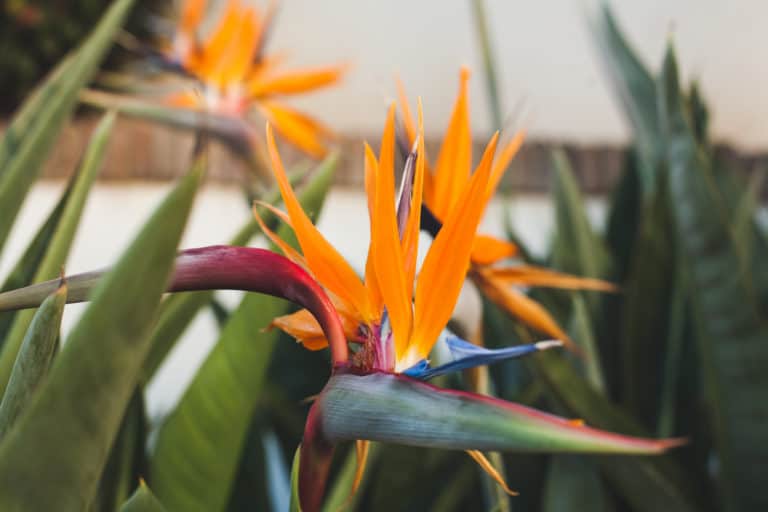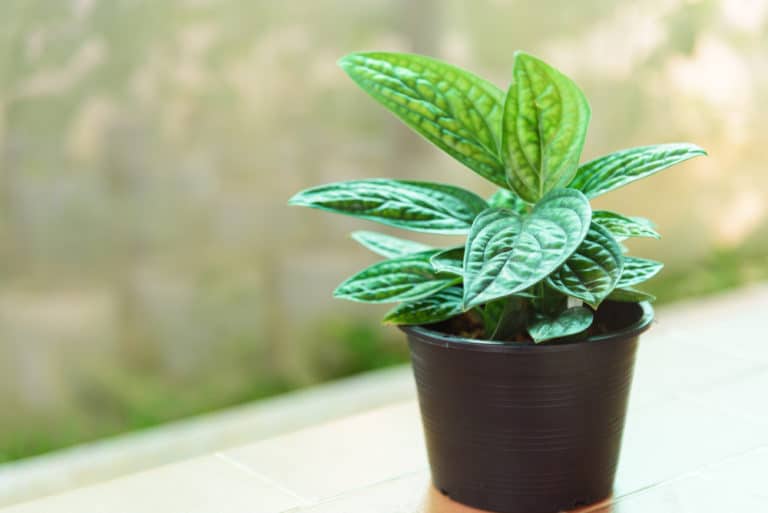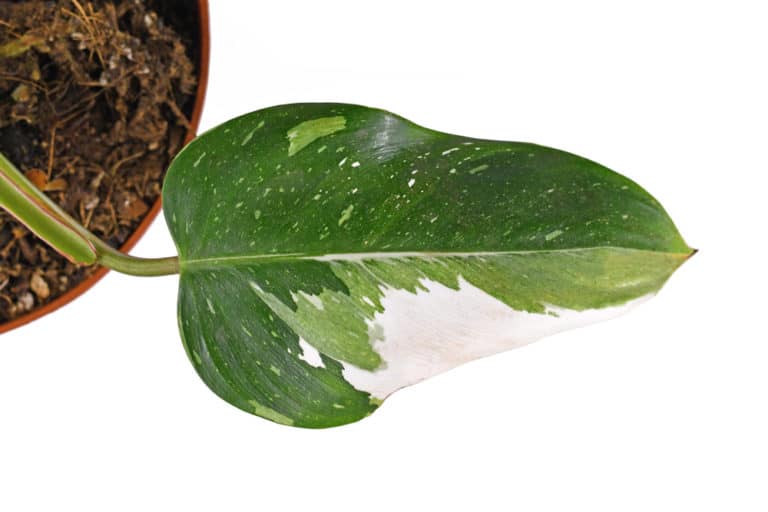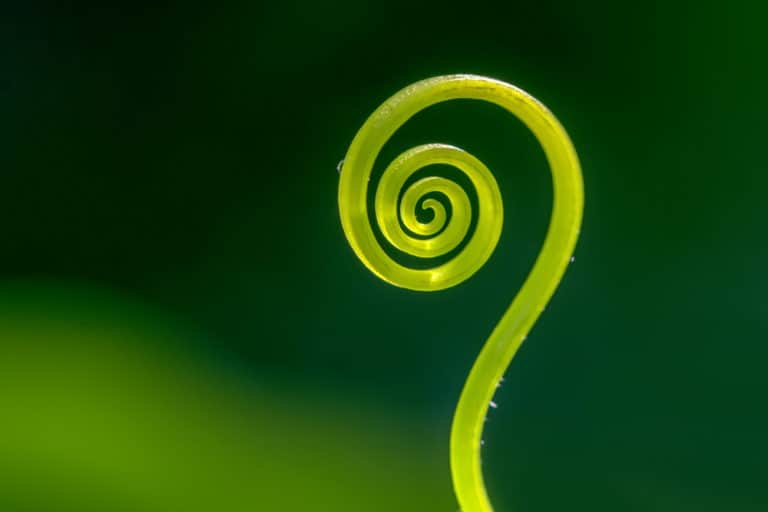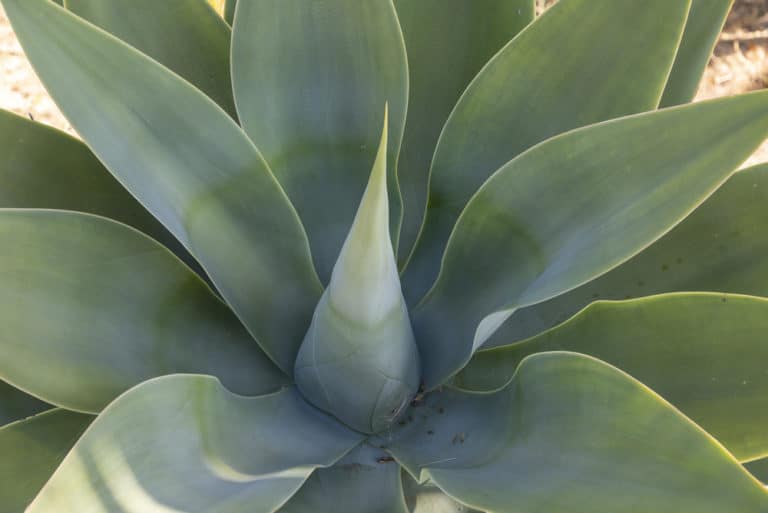Philodendron Hederaceum ‘Lemon Lime’ Care Guide (2024)
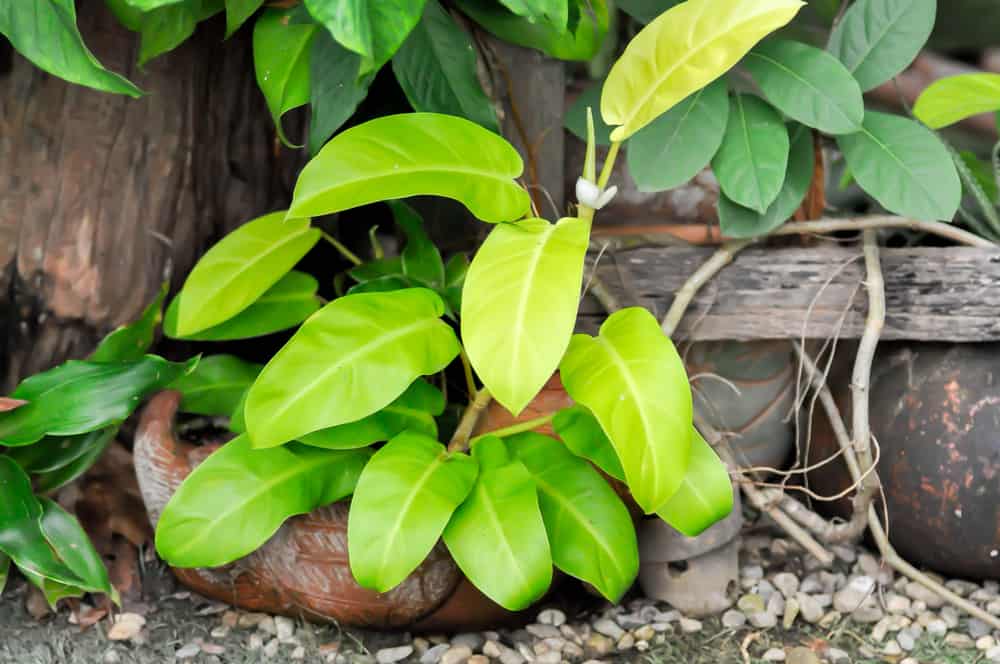
Philodendron Lemon Lime is a recently introduced philodendron cultivar that will instantly brighten up your space.
The gorgeous chartreuse leaves of Lemon Lime Philo, along with its easy care requirements, have quickly made it a favorite.
Whether you’re looking for a new plant for your home or adding to an indoor garden in a store or office, this snazzy new tropical plant is perfect.
| Scientific Name | Philodendron hederaceum ‘Lemon Lime’ |
| Common Name | Lemon Lime Philodendron, Philo Lemon Lime |
| Light | Bright indirect sunlight |
| Watering | Water if the top half of the soil is dry |
| Temperature | 65 to 80ºF (18 to 29ºC) |
| Hardiness Zone | 9 to 11 |
| Humidity | 50% or higher |
| Soil Type | Rich, quick-draining, loamy |
| Soil pH | 6.4 to 7.3 (mildly acidic to neutral) |
| Fertilizing | A balanced feed once a month in spring and summer |
| Repotting | Every 2 years |
| Pruning | As needed in spring and summer |
| Propagation | Root in water or soil |
| Toxicity | Toxic to humans and pets |
| Mature Size | 12 to 24 inches as a houseplant |
| Bloom Time | Rarely blooms indoors |
What’s Unique About Philodendron Lemon Lime?
The Philodendron Lemon Lime plant was only patented in 2010, so it’s never grown in the wild.
Philodendrons are native to the rainforests of the West Indies and Central and South America. Even though this cultivar was developed in a lab, it requires the same growing conditions as its wild forebears.
Philodendron Lemon Lime plants have bright green and yellow leaves which will add a bright accent wherever they are used.
Growing Philodendron Lemon Lime is easy, even if you’ve never grown a plant before.
And like all philodendrons, Philodendron Lemon Lime is a natural air purifier that will help clear your indoor environment of chemicals like formaldehyde.
Philodendron Lemon Lime Care
In the tropical rainforests where the philodendron family originates, these leafy lovelies grow on the forest floor under the dense canopy high above.
While this particular cultivar may have been born in a lab, Philodendron Lemon Lime plant care is the same.
Lemon Lime Philo care basically means keeping your tropical plant in a warm, humid environment.
Light
Philodendrons evolved on the rainforest floor, where they grow under the trees that filter the bright tropical sun.
Because of this, Philodendron Lemon Lime light requirements are for bright but indirect light, or between 10,000 to 20,000 lux.
Most homes can easily meet Lemon Lime Philo light needs without supplementary lights.
However, if you get fewer than 8 hours of sun in winter, you might need to give it some help for a few months a year.
You can set your Philodendron Lemon Lime right next to a north or east window, but if you have a south or west exposure keep it several feet back.
Full sun will damage the leaves and eventually kill the plant.
Watering
In their native rainforests, philodendrons are accustomed to soil that is relatively moist, but never sopping wet.
In your home, their watering needs are not terribly demanding.
The best method for Philodendron Lemon Lime watering is to wait until the top half of the soil has dried out, and then give it a thorough soaking. Let all the excess water drain out before placing the pot back in its saucer.
You may need to water Lemon Lime Philo once a week or so during its growing season in spring and summer, but only once a month in winter. Just check the soil periodically to make sure it isn’t getting too dry.
Temperature
Since philodendrons are natives of the tropics, they love warm weather.
The Philodendron Lemon Lime temperature range is from 65 to 80ºF (18 to 29ºC). Any space in which you are comfortably warm should be a suitable temperature for Lemon Lime Philo.
While it won’t mind a temperature as low as 55ºF (12ºC) at night, anything below that will stunt the growth of your Philodendron Lemon Lime.
Because of this limited temperature tolerance, keep your Philodendron Lemon Lime out of drafts and away from cold windows. The cold blast from an air conditioner can damage it, as well.
While it will enjoy time outdoors in the steamy summer weather, bring it in before temperatures drop in the fall, as it has no frost hardiness.
Humidity
Humidity levels are high in the rainforest home of the philodendron family, but Philodendron Lemon Lime humidity requirements are not overly demanding.
While the ideal humidity for Lemon Lime Philo is 50% or higher, it will usually be just fine in the usual household humidity.
However, if you can increase the humidity level for your Philodendron Lemon Lime, you will be rewarded with bigger and lusher foliage.
While misting the leaves every day is sometimes recommended, wet leaves can end up developing diseases.
It’s better to put your Philodendron Lemon Lime on a pebble tray filled with water, or buy a small humidifier to keep all your tropical plants happy.
Soil
Philodendron Lemon Lime soil needs to have a porous texture, while at the same time having the ability to absorb and hold moisture.
The pH level for Lemon Lime Philo is from 6.4 to 7.3, or mildly acidic to neutral.
A good commercial soil mix for Philodendron Lemon Lime is an aroid mix, but you can also make your own custom soil for Lemon Lime Philo.
A simple mix of half peat moss or coco coir and half potting soil would work well, and you can also throw in a handful of perlite to further lighten up the mix.
Fertilizer
It is best to use a fertilizer for Lemon Lime Philo, so that it can get the nutrients it needs for lush, healthy growth.
A liquid indoor plant fertilizer with a balanced fertilizer ratio of 10-10-10 is the best way to go.
Dilute it to half the recommended strength and pour it evenly over the surface of the soil shortly after watering.
Use Philodendron Lemon Lime fertilizer once a month in spring and summer, and then pause over the fall and winter.
If you see salts on the soil surface, you’ve got a build-up of fertilizer in the soil that can harm your Philodendron Lemon Lime. Take it to the sink and run water through the soil for about 10 minutes to flush it out.
Potting & Repotting
Philodendron Lemon Lime repotting should be done every one or two years.
Philodendron Lemon Lime doesn’t mind being a little rootbound.
However, when you start to see roots poking out the drainage holes, it’s time for repotting Lemon Lime Philo.
This should be done at the start of its growing season in early spring.
Only go up one pot size, as too much extra soil will set back your Philodendron Lemon Lime’s growth.
An unglazed clay pot can help keep the soil moisture levels from getting too high. Drainage holes are essential.
Always use fresh potting soil to keep your Philodendron Lemon Lime disease-free.
Pruning
Because it is a vigorous grower, you may find Philodendron Lemon Lime pruning necessary every three months or so during its growing season.
Of course, you should always trim any dead or damaged leaves as soon as you see them. Not only do they look bad, but they can harbor pests and disease.
You can also trim the stems to create a bushier look. Just snip off a stem right above a node, which will then send out new shoots.
In fact, you don’t even need to cut off the whole stem. Simply making a little cut in the stem, just above the node, can stimulate new growth.
When cutting Lemon Lime Philo, always use sharp, sterilized scissors, and avoid getting any sap on your skin.
Propagation
Philodendron Lemon Lime propagation is really easy, but be aware that this is a patented cultivar, so it is not legal to sell plants you’ve propagated.
However, if you plan to propagate Lemon Lime Philo for yourself or to give away, you should be okay.
In spring, take stems with several nodes and leaves, and cut just below a node. Strip off all but the top leaves, and put the cuttings in water or moist soil.
Keep them in a warm and humid atmosphere, easily done by covering them with a plastic bag.
Within a month or so you should have a good percentage of rooted stems, which can then be planted out on their own.
Also, make sure to check out our in-depth Philodendron lupinum care guide.
Common Problems of Philodendron Lemon Lime
While there are not a lot of potential Philodendron Lemon Lime problems, you may encounter a few along the way.
Most problems with Lemon Lime Philo can be prevented or resolved by giving it appropriate growing conditions.
Keep a close eye on those gorgeous leaves, as they will be your first sign that there’s a problem developing.
Pests
The easiest way to prevent Philodendron Lemon Lime pests from taking over is by stopping them from arriving in the first place.
Give your Lemon Lime Philo some monthly love and wipe down both surfaces of every leaf with a cloth dampened with an insecticidal soap or neem oil solution. This will keep the bugs away.
Spider mites leave yellow spots and sticky webs. Take your Philodendron Lemon Lime to the sink and give the leaves a good shower.
Mealybugs look like colonies of cotton puffs under the leaves. Wipe them away with a cotton ball soaked in rubbing alcohol.
Fungus Gnats are little black flies. Catch the adults with yellow sticky traps, and drench the soil with one part hydrogen peroxide to 4 parts water.
Diseases
Most Philodendron Lemon Lime diseases can be prevented by keeping the soil no more than moist, and the leaves dry.
Lemon Lime Philo is susceptible to root rot if it sits in too wet soil. When leaves start yellowing, and stems get soft, pull out the root ball.
If there are black, smelly roots, cut away all affected parts and replant them in fresh soil after disinfecting the pot.
Leaf spot can be caused by either a fungal or bacterial disease.
When you start to see yellow, brown or black spots on the leaves, cut out all infected foliage and stems, and use an antifungal spray before replanting it in fresh soil.
Growing Problems
Most Philodendron Lemon Lime growing problems are caused by poor growing conditions, so your sick plant can usually be restored to glowing health by improving them.
If your Philodendron Lemon Lime is growing slowly or not at all, you probably have it in too cold a spot.
Browning leaves usually mean that your Philodendron Lemon Lime’s soil has become too dry. Give it a good soaking and water more frequently in future.
If the soil isn’t too wet, yellow leaves may mean that your Philodendron Lemon Lime is in too dark a spot, or is getting too much sun.
Brown leaf tips indicate that it’s not getting high enough humidity.
Toxicity of Philodendron Lemon Lime
Lemon Lime Philo is toxic to humans and pets.
Since it’s a member of the araceae family, that means it’s got calcium oxalate crystals in all parts of the plant, including the sap.
While its toxicity is not usually life-threatening, it’s best to be prepared in case of exposure or ingestion.
For Humans
Since Philodendron Lemon Lime is toxic to humans, some precautions should be taken in the placement and handling of this plant.
Children are more at risk than adults, as they will sometimes eat what they shouldn’t.
While the pain they will immediately experience should stop them from more than a little nibble, they may still have some potentially serious side effects.
If all they’ve got is localized pain in their mouth, rinsing thoroughly and giving them something cold to soothe the pain should be enough.
However, a swollen tongue or constricted airways warrant an immediate trip to the emergency room.
If you get some sap on your skin, rinse it thoroughly with soap and water.
For Pets
This small-scale vining plant is a natural choice for planting in a hanging basket, and you can easily keep the trailing stems far enough from the floor for safety.
Pets of all kinds, including cats, dogs, and rabbits, can suffer fairly severe symptoms after ingesting Philodendron Lemon Lime foliage.
If your pet starts wheezing, drooling, or vomiting, you should take them to the veterinarian immediately.
It’s always a good idea to find a place for your Philodendron Lemon Lime where it cannot be reached by pets or children.
A high shelf or raised pedestal are other ways to keep it away from the small members of your household.
Philodendron Lemon Lime Appearance
The Philodendron Lemon Lime appearance is all about its beautiful, vibrantly colored leaves.
The yellow and green foliage grows in lush profusion on this bushy vining tropical plant.
While flowers are exceedingly rare, especially indoors, the evergreen leaves will more than make up for the lack of a floral display.
Foliage
The colorful foliage of Philodendron Lemon Lime is nothing short of fabulous.
When a new leaf emerges, it’s a lovely pink-gold shade. As the leaves grow, they become a bright chartreuse or emerald green, creating a vibrant tapestry of color.
The petioles are pale yellow and pink.
Leaves are 5 inches long and half that across, heart-shaped with an elongated tip that often curls up at the end.
The leaves have a smooth, leathery texture. Since they remain on the plant for a long time, keep them looking their best with a monthly shower, or by wiping them down with a damp cloth.
Flowering
It would be really unusual for a Lemon Lime Philo flower to appear on a potted plant growing indoors.
However, Philodendron Lemon Lime flowering is possible on a plant grown outdoors in a tropical climate.
When it’s blooming, you will see a white and green spathe wrapped around a white spadix.
While it is not unattractive, it’s certainly never going to be the reason anyone grows Philodendron Lemon Lime.
The vibrant green and yellow foliage will brighten up any setting all on its own, and would also be a terrific foil for red or orange flowers, such as those on a hibiscus.
Size and Growth
When grown indoors, the full size of Philodendron Lemon Lime can be expected to be from 1 to 2 feet, although its vines may stretch much further.
It has a fairly fast growth rate, and can easily double its size in a year. It will continue to put out new shoots from its base throughout its life.
Philodendron Lemon Lime has a compact, bushy form, with more leaves per stem than most philodendrons. This gives it a very full appearance.
It’s best to stake your Philodendron Lemon Lime unless you are growing it as a trailing plant. Using a sphagnum moss pole will give it plenty of support and encourage strong upward growth.
Philodendron Lemon Lime Fragrance
There is no Philodendron Lemon Lime fragrance. The foliage has no scent, and the flowers on this cultivar are extremely rare.
However, Philodendron Lemon Lime will keep your indoor environment healthy, even without a smell.
It filters out contaminants such as formaldehyde which are found in so many manufactured goods in our modern homes.
Fragrance-free plants are also a sensible choice for public spaces where people with scent allergies may have reactions to heavily-perfumed plants.
Retail stores, offices, and medical facilities are all places where unscented plants are preferred.
In your own home, especially if it’s small, you may also find scented plants overwhelming.
Suggested Uses for Philodendron Lemon Lime
This sharp little beauty will fit into so many spots with ease.
Indoors, consider keeping your Philodendron Lemon Lime in a hanging basket or on a shelf in your bathroom, where it will love the extra humidity.
You can train one up a trellis or moss pole to create a living screen of brilliant greens and yellows; in a studio apartment, it’s a great way to section off a sleeping alcove.
If you live in a tropical zone you can grow it outdoors year-round, but even in temperate regions, you can move your Philodendron Lemon Lime outdoors for the summer.
FAQ
What is Philodendron Lemon Lime?
Philodendron Lemon Lime is a recent philodendron cultivar, noted for its yellow and green foliage and bushy growth habit. It is grown as a houseplant.
How to identify Philodendron Lemon Lime?
Philodendron Lemon Lime has heart-shaped leaves in shades of chartreuse and yellow, growing on a bushy plant that can be trained as a climbing vine or allowed to trail.
How to care for Philodendron Lemon Lime?
Philodendron Lemon Lime should be grown in moderately moist soil with regular fertilizing, in a warm and humid environment, and kept out of the full sun.
How to grow Philodendron Lemon Lime indoors?
Philodendron Lemon Lime can be grown indoors as a potted plant in a warm spot with moderate to high humidity, in a location with bright, indirect light.
How to grow Philodendron Lemon Lime outdoors?
Philodendron Lemon Lime can be grown outdoors year-round in tropical regions either in the ground or in containers or moved out in the summer months in temperate zones.
How fast does Philodendron Lemon Lime grow?
Philodendron Lemon Lime grows fairly fast to its full size in a pot, requiring pruning more than once a year to keep it from getting too overgrown.
How tall does Philodendron Lemon Lime grow?
Philodendron Lemon Lime grows to a height of 1 to 2 feet, with trailing stems up to 10 feet long if not pruned to control growth.
How to make Philodendron Lemon Lime grow faster?
Philodendron Lemon Lime will grow faster when it is kept in a hot environment with high humidity, and fed and watered regularly to support vigorous growth.
How to stake Philodendron Lemon Lime?
Philodendron Lemon Lime can be staked with a sphagnum moss pole or trained up a trellis for a climbing vine, or planted in a hanging basket for trailing stems.
How to pot Philodendron Lemon Lime?
Philodendron Lemon Lime should be planted in porous, well-draining soil that will also retain a moderate amount of water. Use an unglazed clay pot with a drainage hole.
How to revive Philodendron Lemon Lime?
Philodendron Lemon Lime’s soil should never dry out completely, but if it does, set the pot into a pail of water and completely saturate the soil, then let the excess drain out.
Why is my Philodendron Lemon Lime dying?
Your Philodendron Lemon Lime may have a fungal or bacterial disease affecting the roots, foliage, or both. Cut out all affected parts and replant in fresh soil.
Why is my Philodendron Lemon Lime drooping?
If your Philodendron Lemon Lime is drooping, it may be getting too much water or its soil may be dried out. Check the soil moisture level and proceed accordingly.
How cold can Philodendron Lemon Lime tolerate?
Philodendron Lemon Lime’s growth will slow down or leaf damage will occur at temperatures below 55ºF (12ºC), and exposure to freezing temperatures will kill it.
How to get rid of pests on Philodendron Lemon Lime?
Philodendron Lemon Lime pests can be repelled by spraying or wiping down the leaves once a month with insecticidal soap or neem oil solution.
Is Philodendron Lemon Lime toxic to cats?
Yes, Philodendron Lemon Lime is toxic to cats. If your cat starts vomiting, drooling, or wheezing, take it to the veterinarian as soon as possible.
Is Philodendron Lemon Lime toxic to dogs?
Yes, Philodendron Lemon Lime is toxic to dogs. If your dog starts drooling excessively, vomiting, or has a swollen mouth and tongue, you should take him to the vet.
Is Philodendron Lemon Lime toxic to children?
Yes, Philodendron Lemon Lime is toxic to children. If after eating some foliage your child has a swollen tongue or difficulty breathing, take them to the emergency room.
Is Philodendron Lemon Lime toxic to humans?
Yes, Philodendron Lemon Lime is toxic to humans. If you get some of the sap on your skin, rinse it off as soon as possible to prevent a rash.
Does Philodendron Lemon Lime have a scent?
No, Philodendron Lemon Lime does not have a scent. Because it is fragrance-free, it can be used in public settings without fear of people having allergic reactions.

